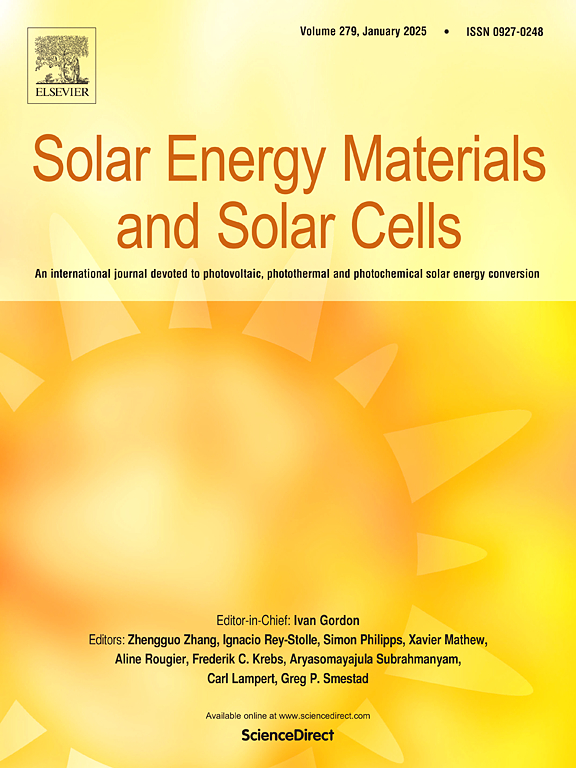Enhancing the stability of methylammonium-based perovskite solar cells prepared in ambient conditions by adding formamidinium cations
IF 6.3
2区 材料科学
Q2 ENERGY & FUELS
引用次数: 0
Abstract
Perovskite solar cells (PSCs) represent an up-and-coming emerging technology for the future of clean and renewable energy generation. However, these devices still suffer stability and durability issues due to moisture when exposed and/or prepared under ambient conditions. Here, we investigate the influence of incorporating formamidinium cation into methylammonium-based lead iodide perovskite films to improve the stability of PSCs. The amount of FA+ ranges from 0 (pure MAPI) to 1 (pure FAPI) perovskite passing by different amounts (FA0.125MA0.875PI, FA0.25MA0.75PI, FA0.5MA0.5PI). All the solutions and deposition of each film are performed in an uncontrolled ambient atmosphere (relative humidity ranging from 40 % to 60 %), aiming to replicate scalable manufacturing environments. The perovskite films present high crystallinity and uniformity, confirmed by the X-ray patterns, corroborating the predominantly photoactive FAPI α-phase or the MAPI cubic one. Scanning electron microscopy (SEM) images reveal that increasing FA+ content leads to larger grain sizes, reducing grain boundaries. Absorption spectra present a gradual red shift from MAPI to FAPI perovskites due to increased FA+ content, corresponding with the bandgap energy analysis. PSCs present photocurrent conversion efficiencies up to 13.4 %, and the photocurrent action spectra confirm the absorption observation, presenting energy conversion in higher wavelengths as the FA+ contents increase. A long-term stability experiment reveals that perovskites with more than 25 % FA+ maintain their efficiency over 80 % after 2160 h, a longer durability than MAPI PSCs. The durability improvement is ascribed to incorporating FA+ into the MAPI perovskite crystal lattice, which changes the grain size, surface area, and grain boundaries.
求助全文
约1分钟内获得全文
求助全文
来源期刊

Solar Energy Materials and Solar Cells
工程技术-材料科学:综合
CiteScore
12.60
自引率
11.60%
发文量
513
审稿时长
47 days
期刊介绍:
Solar Energy Materials & Solar Cells is intended as a vehicle for the dissemination of research results on materials science and technology related to photovoltaic, photothermal and photoelectrochemical solar energy conversion. Materials science is taken in the broadest possible sense and encompasses physics, chemistry, optics, materials fabrication and analysis for all types of materials.
 求助内容:
求助内容: 应助结果提醒方式:
应助结果提醒方式:


